Chod practice: offering yourself to all beings, the ultimate expression of bodhichitta
The vivid and visceral imagery of Chod Practice — where you visualize offering your own body to all sentient beings, chopped up into grisly bits, and presented in a human skull — can lead to extreme misunderstanding. Teachings such as Chod are advanced and profoundly effective practices that help us “cut” our ego, tame our internal “demons” and develop genuine bodhichitta for all beings. But, the need for explanation and teacher guidance is critical.
The hypnotic beat of Chod drums and bells, and the careful chanting of melodious but mysterious chants at first seem provocative and beautiful. Then, when the visualized meditation is described, and the teacher blows on a horn made of human bone, abruptly that perception might change. Chopping up one’s own body? Playing a human bone instrument? What’s that all about?
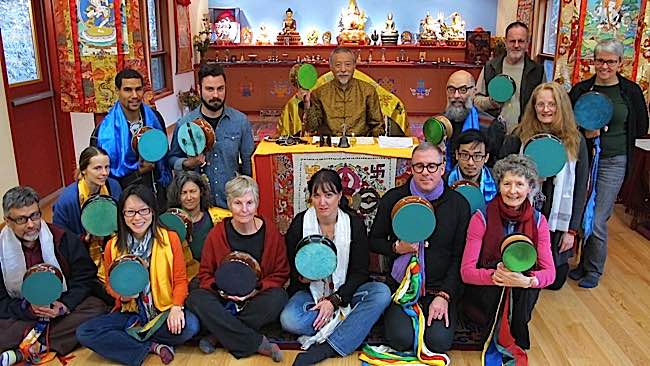
Gruesome Imagery; a Beautiful Giving Practice
Despite its apparently gruesome imagery, if undertaken under a teacher’s guidance, it is a most beautiful giving practice, arguably the highest expression of kindness for all sentient beings.
Zasep Rinpoche teaching on Chod — introductory forty-minute video with teaching and a demonstration of Chod chant/drumming, and beautiful images from a 108 Springs Retreat in Chod led by Rinpoche in Mongolia:
How then to reconcile this kindness and giving with its “menacing” persona? Chod practitioners often choose to go to “charnel grounds” (cemeteries) or “desolate places” (wilderness) to practice. Again, almost more than any other Vajrayana practice, this seems primeval and dark — until it’s symbolism is understood. What does it all mean? How can it be about wisdom and Bodhichitta?
Wonderful Cho with Ani Choying Droma:
Chod Means to Cut
Chod literally means to “cut”, but it in reference to “cutting the ego” and “cutting attachment” such as “cutting greed” — being willing to give up everything for other sentient beings — not the literal “cutting” the body.
Venerable Khenchen Thrangu Rinpoche explains in his teachings: “Chod means “cutting through,” severing erroneous concepts about the world of appearances and all illusions regarding the existence of a personal self. The practice of chod is an advanced skilful method that enables practitioners to become free of clinging to false notions and beliefs regarding inherent existence of appearances and experiences and therefore of an individual self. Attachment and clinging to a self are forces that give rise to the defilements, which are the source of anguish and pain. Chod is the practice that enables disciples to understand emptiness of all appearances that are fit to arise and therefore can be apprehended. It is an exceptional practice.” [2]
Video: Troma Tsog with Dudjom Yangsi Rinpoche | Samje Djedren Ani Gompa, Nepal
It is a practice designed “to reinforce and develop the understanding of egolessness and in order to develop compassion for all sentient beings,” wrote teacher Tsultrim Allion in her book Women of Wisdom. “In this practice, after various preliminaries, the practitioner performs the offering of the body — this is the essence of Chod practice. ‘Chod’ (gCod) literally means “to cut” referring to cutting attachment to the body and ego.”[1]
Supreme Bodhichitta: Offering Nectar to All Beings
Imagining cutting up our own body, helps us to overcome clinging to the body and the ego. Needless to say it’s a visualization, and not literal. Offering the “chopped up” body — now converted into nectar — to all beings, is an act of supreme Bodhichitta.
We are especially taught to offer the nectar also to our enemies, and to demons, not just Enlightened beings and our family/friends. This not only becomes an act of true Bodhichitta (willingly offering our body all beings), it also becomes a path to “taming our demons.”
Video: Chod Retreat with Lama Tsultrim Allione Kaalashina 2012
“First the practitioner visualizes the consciousness leaving the body through the top of the head and transforming itself into a wrathful dakini,” describes teacher Tsultrim Allion. “This wrathful dakini then takes her crescent-shaped hooked knife and cuts off the top of the head of the body…” She goes on to describe in great detail the way the body is cut up and placed into a skull cup, then transformed into precious nectar. [1]
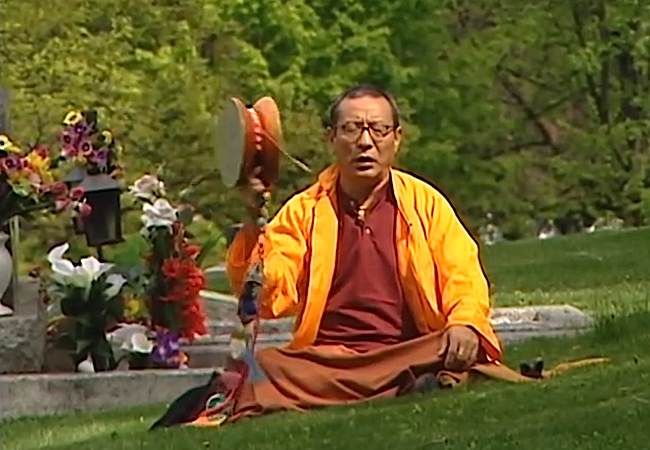
Offering Even to Demons
We offer up our body even to demons, as well as our enemies and other vilified beings. This is normally taken as a reference to inner demons, our inner self. Putting aside mythological demons, Chod is a method to satisfy and tame these inner four demons. “When we think of a demon, we generally think of an external spirit which attacks us, but Machig realized the true nature of demons is the internal functioning of the ego.

The internal demons are:
- “the Demon that Blocks the Senses” — our fixations on sensory attractions (or revulsions), such as “a desire to possess” a beautiful woman or man
- “the Demon which Cannot be Controlled” — our run-away thought processes that distract us from true awareness and realizations
- “the Demon of Pleasure” — becoming attached to pleasures, such as food or sex, to the point where it becomes obsessive or controlling
- and, “the Demon of the Ego” — perhaps the greatest demon of all, the ego creates our fears and cravings (for example our fear of growing old and dying). It is the ego that conditions our view of our world.
Video: The Essential Meaning of Chod:
Chod: Purifying Obstacles and Accumulating Merit
Chod is a very complete and profound practice. Not only does it help us “cut through” our obstacles — including “erroneous concepts of the world of appearances and all illusions regarding the existence of personal self” — but it also helps the practitioner, to accumulate vast merit.
Venerable Khenchen Thrangu Rinpoche elaborates: ” Unfavourable conditions are all negative habits that conceal the pure vision of reality. There are three types of unfavorable conditions: (1) delusions caused by past evil deeds, (2) delusions that are present and manifest as disturbing and therefore harmful emotions, and (3) the delusion of not knowing the true nature of all things. These delusions need to be purified. Furthermore, a disciple needs to accumulate favorable conditions, accomplished by practicing the six paramitas.
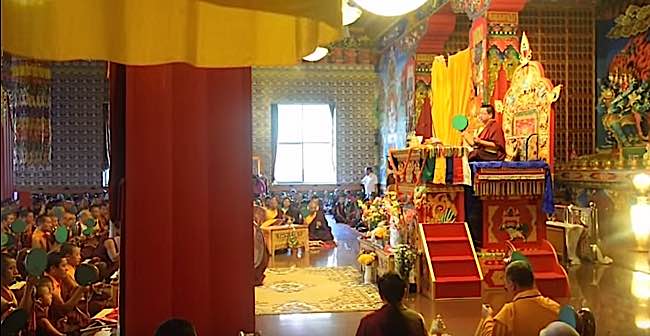
The Six Paramitas
“Generally, the six paramitas that bodhisattva practices in order to achieve the highest goal of awakening are: generosity, ethical conduct, patience, joyful endeavor, meditation, and wisdom-awareness,” explains Rinpoche. “The first paramita (“perfection”) is transcendent giving that dissipates scarcity and wants that beings living in poverty endure. There are three ways to be generous: general, exceptional, and very difficult generosity. (1) General generosity is giving clothes, food, medicine, and other everyday necessities to those who are destitute. (2) Exceptional generosity is additionally giving away precious things that one cherishes very highly to those in need. (3) Extremely difficult generosity is even giving away one’s own body.”
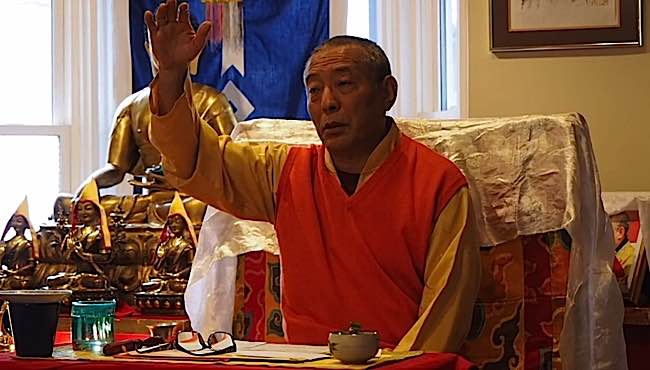
NOTES
[1] Women of Wisdom, Tsultrim Allion, Snow Lion; Revised edition (Sept. 5 2000)
[2] “Chod — The Introduction & a Few Practices”, Venerable Khenchen Thrangu Rinpoche teachings
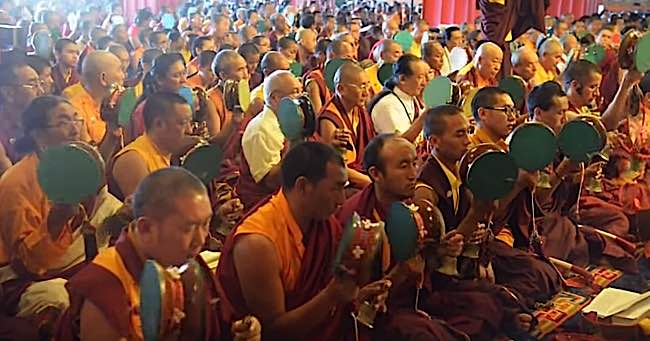
2 thoughts on “Chod practice: offering yourself to all beings, the ultimate expression of bodhichitta”
Leave a Comment
More articles by this author

Guru Rinpoche is ready to answer and grant wishes: “Repeat this prayer continuously” for the granting of wishes

VIDEO: Vajrapani Vajra Armor Mantra: Supreme Protection of Dorje Godrab Vajrakavaca from Padmasambhava
Search
Latest Features
Please support the "Spread the Dharma" mission as one of our heroic Dharma Supporting Members, or with a one-time donation.
Please Help Support the “Spread the Dharma” Mission!

Be a part of the noble mission as a supporting member or a patron, or a volunteer contributor of content.
The power of Dharma to help sentient beings, in part, lies in ensuring access to Buddha’s precious Dharma — the mission of Buddha Weekly. We can’t do it without you!
A non-profit association since 2007, Buddha Weekly published many feature articles, videos, and, podcasts. Please consider supporting the mission to preserve and “Spread the Dharma." Your support as either a patron or a supporting member helps defray the high costs of producing quality Dharma content. Thank you! Learn more here, or become one of our super karma heroes on Patreon.
Lee Kane
Author | Buddha Weekly
Lee Kane is the editor of Buddha Weekly, since 2007. His main focuses as a writer are mindfulness techniques, meditation, Dharma and Sutra commentaries, Buddhist practices, international perspectives and traditions, Vajrayana, Mahayana, Zen. He also covers various events.
Lee also contributes as a writer to various other online magazines and blogs.








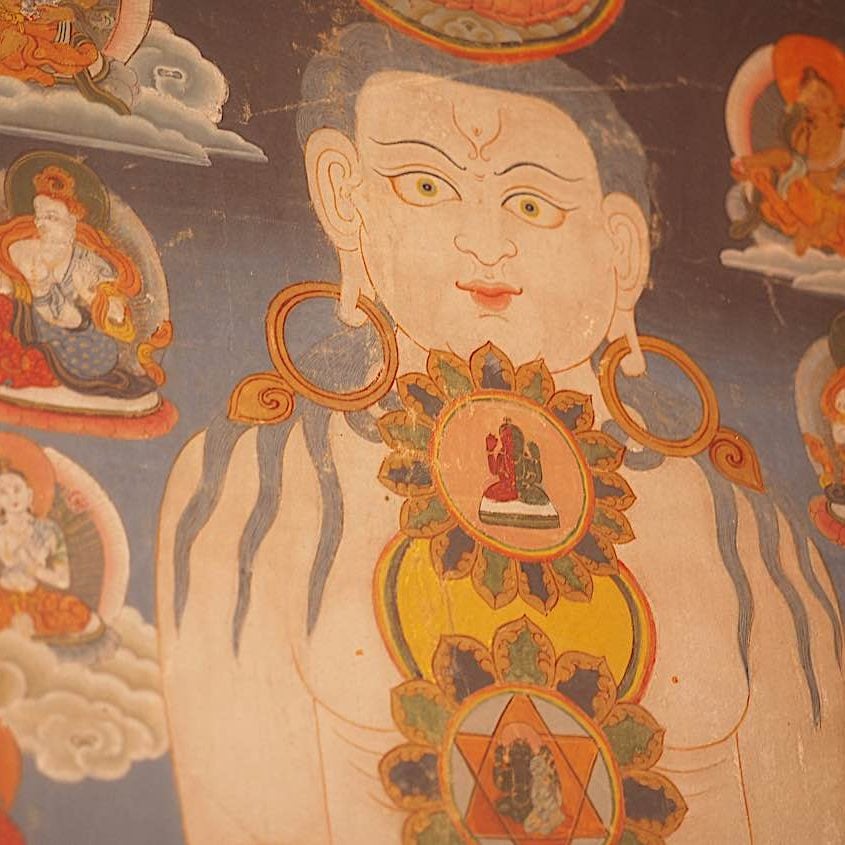








Thank you thank you
Happy blessings ————–
བཀྲ་ཤིས་བདེ་ལེགས
“Above all, be at ease, be as natural and spacious as possible. Slip quietly out of the noose of your habitual anxious self, release all grasping, and relax into your true nature. Think of your ordinary emotional, thought-ridden self as a block of ice or a slab of butter left out in the sun. If you are feeling hard and cold, let this aggression melt away in the sunlight of your meditation. Let peace work on you and enable you to gather your scattered mind into the mindfulness of Calm Abiding, and awaken in you the awareness and insight of Clear Seeing. And you will find all your negativity disarmed, your aggression dissolved, and your confusion evaporating slowly like mist into the vast and stainless sky of your absolute nature.”
― Sogyal Rinpoche, The Tibetan Book of Living and Dying